Design decisions for buildings and communities are critical to efforts to increase local and regional resiliency. Building designers — of residential, institutional, and commercial structures — should strive to incorporate passive and active survivability concepts into new and renovated structures.
Community planners and developers need to incorporate concepts that increase the capacity to maintain transportation flow, strategies to handle water management, and infrastructure approaches that will withstand a variety of risks.
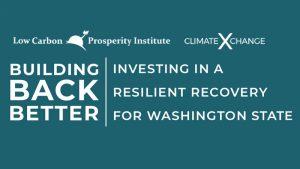
Building Back Better: Investing in a Resilient Recovery for Washington State
To figure out the best investment strategy, Climate XChange and the Low Carbon Prosperity Institute analyzed the economic and health impacts of 14 different investment programs in Washington State.
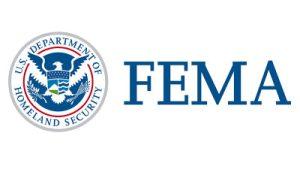
Building Resilient Infrastructure and Communities Program
The Building Resilient Infrastructure and Communities program aims to shift federal focus away from reactive disaster spending and toward research-supported, proactive investment in community resilience.
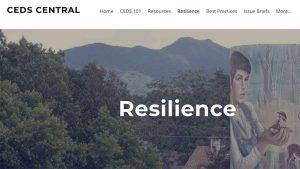
CEDS Central: Resilience
The materials on this site provide a variety of information about resilience and best practices to incorporate into CEDS planning and implementation.

Driving Finance Today for the Climate Resilient Society of Tomorrow
This paper reviews barriers and opportunities for financing resilience and adaptation, chiefly targeting financial system constituents.
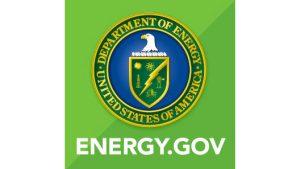
Federal Financial Assistance Programs for Resilience Activities
The U.S. Department of Energy’s (DOE) interactive matrix is a list of selected federal financial assistance programs that are available to assist state and local, tribal, and territorial governments in natural hazard mitigation and energy resilience activities.
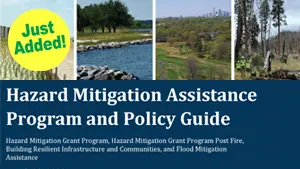
Hazard Mitigation Grant Program (HMGP)
FEMA’s Hazard Mitigation Grant Program provides funding to state, local, tribal and territorial governments so they can develop hazard mitigation plans and rebuild in a way that reduces, or mitigates, future disaster losses in their communities.
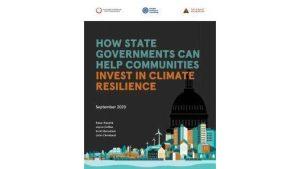
How State Governments Can Help Communities Invest in Climate Resilience
Helping local communities build climate resilience can reap huge rewards for state governments.
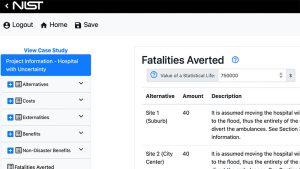
NIST’s Economic Decision Guide Software
NIST’s Economic Decision Guide Software tool can be used to select cost-effective community resilience projects.

Norfolk’s Resilience Strategy
The city of Norfolk, as a 100 Resilient Cities grantee, developed a Resilience Strategy that was published in October 2015. The stated goal of the plan is to reduce risks as well as embrace new ways of thinking and thriving in conditions that require continuous innovation. The full plan is available online.
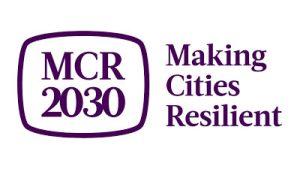
Resilience Roadmap: Making Cities Resilient 2030 — UNDRR
Making Cities Resilient 2030 (MCR2030) is a programmatic approach developed by the UN Office for Disaster Risk Reduction (UNDRR) to help cities reduce risk and build resilience.

Building Back Better: Investing in a Resilient Recovery for Washington State
To figure out the best investment strategy, Climate XChange and the Low Carbon Prosperity Institute analyzed the economic and health impacts of 14 different investment programs in Washington State.

Building Resilient Infrastructure and Communities Program
The Building Resilient Infrastructure and Communities program aims to shift federal focus away from reactive disaster spending and toward research-supported, proactive investment in community resilience.

CEDS Central: Resilience
The materials on this site provide a variety of information about resilience and best practices to incorporate into CEDS planning and implementation.

Driving Finance Today for the Climate Resilient Society of Tomorrow
This paper reviews barriers and opportunities for financing resilience and adaptation, chiefly targeting financial system constituents.

Federal Financial Assistance Programs for Resilience Activities
The U.S. Department of Energy’s (DOE) interactive matrix is a list of selected federal financial assistance programs that are available to assist state and local, tribal, and territorial governments in natural hazard mitigation and energy resilience activities.

Hazard Mitigation Grant Program (HMGP)
FEMA’s Hazard Mitigation Grant Program provides funding to state, local, tribal and territorial governments so they can develop hazard mitigation plans and rebuild in a way that reduces, or mitigates, future disaster losses in their communities.

How State Governments Can Help Communities Invest in Climate Resilience
Helping local communities build climate resilience can reap huge rewards for state governments.

NIST’s Economic Decision Guide Software
NIST’s Economic Decision Guide Software tool can be used to select cost-effective community resilience projects.

Norfolk’s Resilience Strategy
The city of Norfolk, as a 100 Resilient Cities grantee, developed a Resilience Strategy that was published in October 2015. The stated goal of the plan is to reduce risks as well as embrace new ways of thinking and thriving in conditions that require continuous innovation. The full plan is available online.

Resilience Roadmap: Making Cities Resilient 2030 — UNDRR
Making Cities Resilient 2030 (MCR2030) is a programmatic approach developed by the UN Office for Disaster Risk Reduction (UNDRR) to help cities reduce risk and build resilience.
